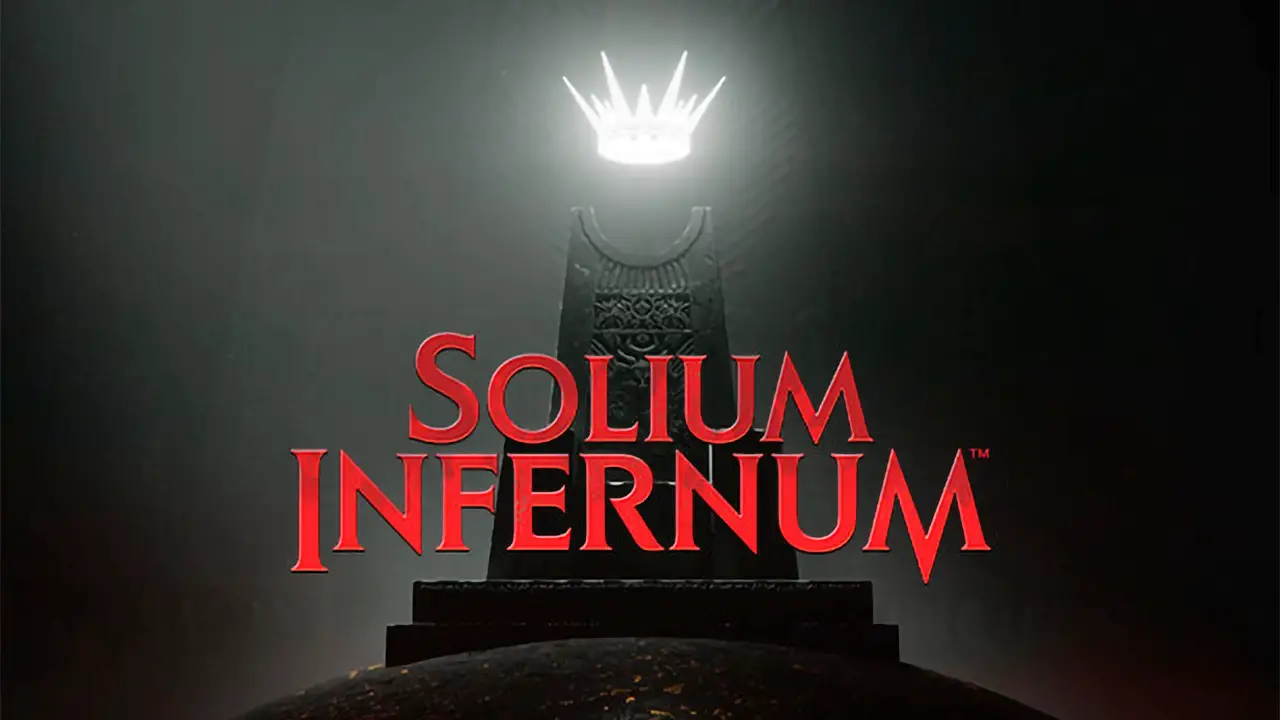There are a lot of different thrones to fight over in a turn-based game. Armies have been raised to try to reclaim the lost throne of Avalon or unite the crowns of England and France, as well as the Iron Throne of Westeros and other obscure places. But in Solium Infernum (referred to as SI in this review), you will wage a brutal and sometimes subtle war for the very throne of hell.
As the game’s dramatic opening video says, “It is better to rule in Hell than serve in Heaven.”
Solium Infernum is a remake of a well loved but somewhat obscure turn based game from 2009 which had a dedicated following playing PBEM games of SI. The game was notoriously complex and dense, and even creating your own “arch-fiend”, who will be your in-game avatar, was a huge challenge.
Luckily, the game is back with a fresh, infernal coat of paint and a slightly more approachable road to hell.
GAMEPLAY
Solium Infernum is played out on a hex map of hell, with gruesome grey fields of ash, dark towering mountains and named places of power, such as the “Tree of Woe” or the “Wheel of Pain”. There are also a number of fortresses from which you and your fellow arch-fiends will make your plans and send forth your damned legions (they are literally damned!) to make your play for the throne.
You see Lucifer has vanished from the throne and the arch-fiends of hell, a colourful cast of demons, are bidding to prove themselves to the others to become the new Lord of Hell, and rule from the capital city of Pandemonium.
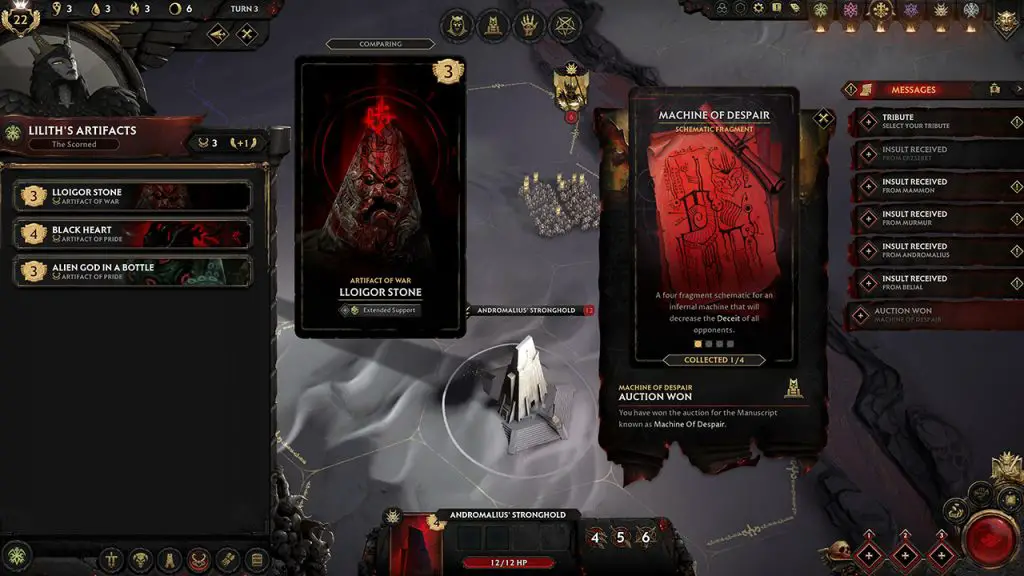
SI has a very thin action economy, starting the game with just two actions, so every move has to count and help you accumulate prestige, which is your way to seize the throne at the end of the game. Games of SI are generally quite short, with turn limits of 30-70. A game of SI is a taut, vicous and insidious affair and you’ll fail a lot, there’s an opening warning to those that play the game that you should expect to find the game difficult.
Added to the sparseness in game economy is tribute, which is the “money” of the game spent on a wide array of things. Each turn, you can choose to spend a precious action to gain tribute, as well as gain a small trickle of tribute just by holding your fortress.
On your turn, you can deploy your legions, who can move across the map and claim hexes as part of your dominium. The game has strict rules on attacking territory owned by other players, so you can make good use of blocking off your enemies, but mutual borders will almost always create flashpoints between arch-fiends.
You can also create devious plots, which are essentially missions that will grant you prestige. You can openly declare a scheme to increase the rewards, which is a nifty mechanic. You can also spend your hard-earned prestige to gain artifacts, raise new legions, and recruit fearsome praetors who you can then attach to increase their power and give you more firepower on the field.
Being a game of hellish plots and plans, you can also conduct subtle intrigues and complex diplomacy against your opponents. You can make a demand for tribute which, if not paid, will allow you to then invade their territory, allowing you to gain leverage over an enemy.
There’s also a wide battery of deadly rituals and spells that you can cast to weaken enemy units, learn what they are planning, or cause them other troubles.
The game play is very tight and the synchronous turn-based play means that the order in which things happen is very important. In an early skirmish game of mine, I miscalculated the order in which people would move and attacked a location which was then conquered before I could move by an opponent, meaning I had also wasted a precious action!
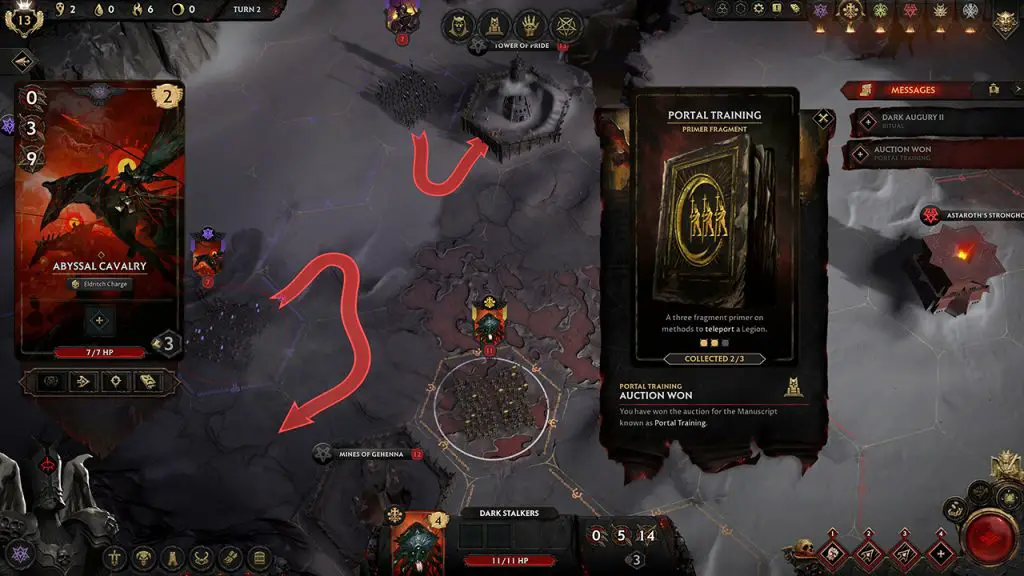
Each turn, a new player is “regent” and will have the initiative over the others. The more players, the longer it takes for that initiative to come around and so striking while the iron is hellishly hot becoming crucial.
Combat between legions and locations is played out in a three phased battle, where the capabilities of the units are compared and then HP damage is suffered by the loser. This means that there is seldom one unit that is better than all others but you can make up for a units weaknesses by developing powerful stratagems or assigning praetors to aid them and boost their weaker stats.
SI is a very complex, dense game that will require you to play a lot of games to get good at it. The intense, savage diplomacy is a key component, and whilst the game has a tutorial, which is decent but not brilliant as there are concepts that it fails to explain at all, you can only really learn the game by playing it.
The AI mostly makes good moves but doesn’t do very well at diplomacy and occasionally makes some sub-optimal moves. SI is really designed to be played multiplayer and has both a “live” version and a much better “synchronous” turn based mode where players have a timer to deliver their turns which can be set to days, which keeps the pace moving quite nicely.
Solium InfernumI is a very complex, dense game that will require you to play a lot of games to get good at it
Playing against your fiendish friends or random people online sees SI really reach its dreadful peak and the game then becomes a savage knife fight with plots and schemes that make Game of Thrones seem like a kids birthday party.
For those who don’t have the appetite for online play (or people to play with), you can play against the AI in a skirmish game or play through the incredibly difficult series of chronicles that show you the journey that each arch-fiend undertook. I found these incredibly difficult, but playing against the AI isn’t ideal.
VISUALS
SI has a muted, gloomy color palette, as you might expect, with lots of grey, black, and red, and the graphics are clean without exactly being amazing. The images for the arch-fiends are nice, with a lot of character, though they aren’t exactly state-of-the-art. The card images for units, places, and artifacts are good, with a lot of character and evocative imagery.
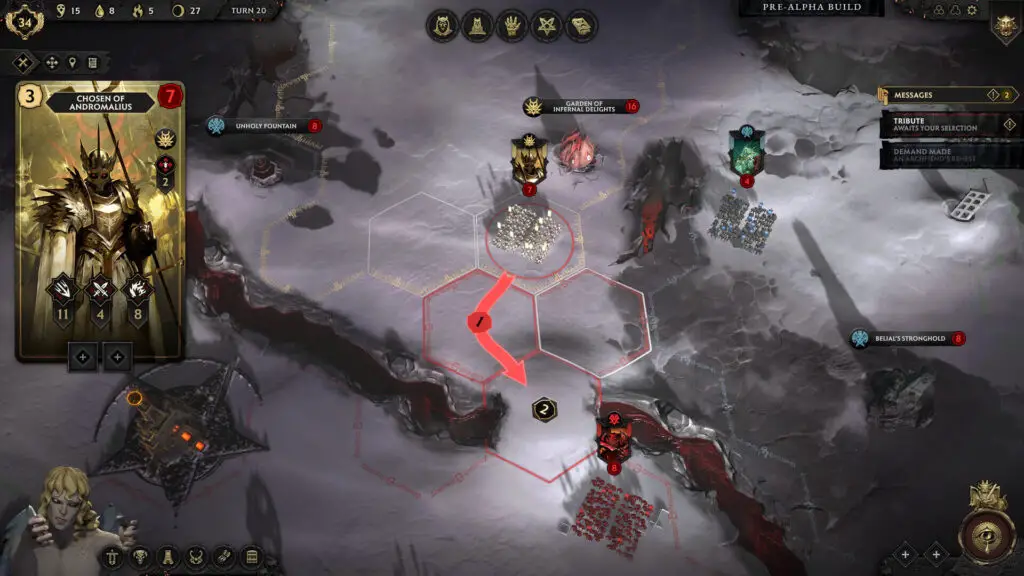
SI isn’t a game that won’t scorch your retina but it’s solid and certainly up to the standard of say Age of Wonders 4. The game’s UI is generally good, though the gloomy look of it occasionally obscures what you’re looking at. I have some eyesight issues, but I generally found it very hard to tell what I was looking at when it came to tribute tokens.
The game uses nested tooltips well; you can also consult the extensive encyclopedia as you play.
SOUND & AUDIO
Again, SI isn’t going to win any awards here. The sound is fine, with the chanting of your legions, rumbles of thunder, battle cries, and grumbling and whispering of arch-fiends. The sound adds to the sense of place for the game without being very exciting.
After a couple of games, I tended to mute the sound and just put some music on!
PERFORMANCE & SETTING
I have found it to perform generally very well in my SI games. I encountered one bug, where a units move appeared to cancel for no obvious reason and there are some reports of some bugs here and there. Performance wise, SI has slowed down once on my rig but I’ve had to fatal crashes or lockups so the game appears to work quite nicely. Multiplayer is often where the bugs live, but so far, I’ve not encountered anything, which is encouraging!
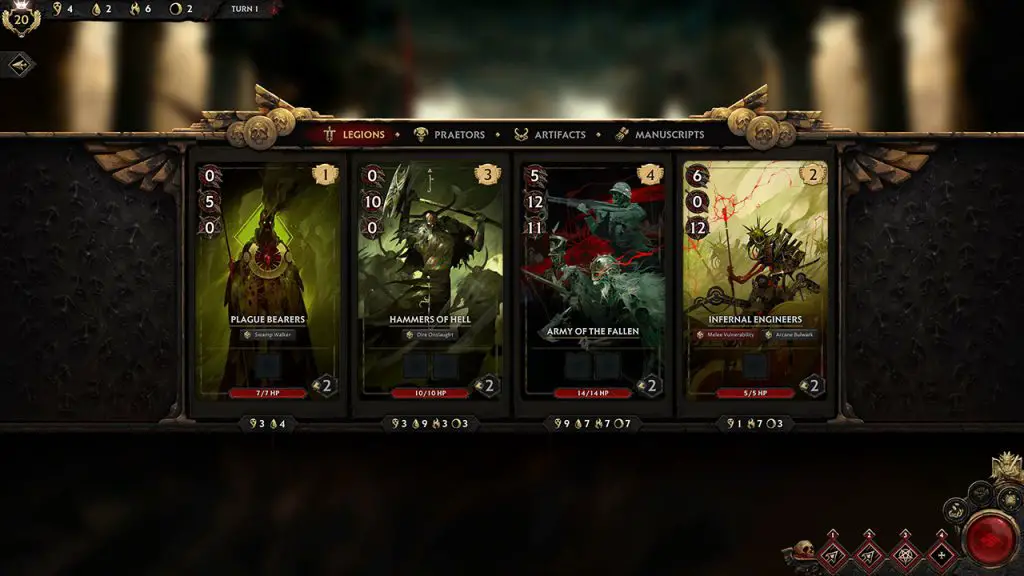
CONCLUSION
SI is a very solid, very tight turn-based strategy game with a unique theme and a very solid execution. SI requires a combination of chess-like execution and intricate plot weaving in the feel of the classic friendship wrecking “Diplomacy”.
The combination of systems in SI works very well, although there is a very steep learning curve with the game, which means that you need to learn by doing, combining various schemes, spells, legions, and praetors to have any chance of winning. Each of the game’s eight pre-generated arch-fiends plays differently, and you’ll be hard-pressed to master them all.
The theme of hell is generally well done and it never gets to be edge-lord upsetting and some may feel that the game somewhat soft-sells the hellish theme. But I think it’s treading a fine line between being evocative and offensive, and SI gets it right.
I have to admit that for me, SI is a game better admired than enjoyed. It’s bleak theme, it’s incredibly intricate systems and its brutal back-stabbing all left me quite cold whilst playing the game and whilst I think it’ll be catnip, especially for those playing regularly in multiplayer, your mileage may vary.
SI’s steep learning curve and difficulty will be a bar to entry for many, especially casual players. But those that get past its gates will find that they really enjoy it. SI is superbly crafted, with a tight in game action economy that reminded me a bit of the all time classic “Into the Breach”.
SI is much less accessible than that game but still has a chess-like feel, a unique theme, and a solid presentation that should make it very appealing. Fans of the original may find the new game a bit simpler but may appreciate the game’s stronger graphics and quicker style of play. Solium Infernum is available now on Steam!


